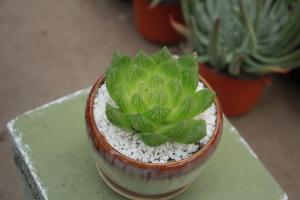How to Treat Water When Filling Planted Tank
Filling a planted tank with water may seem like a simple process, but it's actually quite complex - especially when it comes to treating the water. As a responsible aquarium owner, it's crucial to ensure the water going into your planted tank is clean, safe, and free of harmful chemicals. Here's how to treat water when filling a planted tank:
Step 1: Dechlorinate
The first step in treating tap water for your planted tank is to remove any chlorine or chloramine that may be present. Chlorine is added to tap water to kill bacteria, viruses, and other harmful organisms, which is useful for human consumption but can be harmful to aquatic life. Chloramine is a combination of chlorine and ammonia and can be even more harmful than chlorine alone. To remove these compounds, you can use a dechlorinator, which neutralizes the chlorine and chloramine in tap water. There are many dechlorinators available on the market, so be sure to choose one that is suitable for your tank size and type.
Step 2: Test Water Chemistry
Once you have dechlorinated the water, the next step is to test its chemical composition. Testing for pH, ammonia, nitrite, and nitrate levels is essential to ensure that the water is at safe levels for your plants and aquatic life. If any of these levels are off, you'll need to make adjustments before adding the water to your planted tank. For example, if the water's pH is too high or low, you can use pH adjusters to bring it within the recommended range. It's crucial to test the water chemistry regularly to ensure that the conditions in your planted tank are optimal for the growth and health of your plants and aquatic pets.
Step 3: Add Necessary Nutrients
Once the water chemistry is balanced, it's essential to add necessary nutrients to encourage plant growth in your planted tank. These nutrients can be added in the form of fertilizers, which may contain nitrogen, phosphorus, and potassium. Some fertilizers also include trace elements, such as iron, copper, and magnesium. The type of fertilizer and amount to use depends on the plants you have in your planted tank. It's essential to read the instructions carefully and measure correctly, as too much fertilizer can be harmful to your plants and aquatic pets.
Step 4: Consider Temperature
When filling your planted tank with water, it's vital to ensure that the temperature is suitable for your plants and aquatic pets. Most tropical freshwater aquarium plants prefer a temperature of around 72 to 82 degrees Fahrenheit. However, different species of plants and aquatic pets may have different temperature requirements. To ensure the water temperature is correct, you can use a thermometer to measure the temperature of the water coming out of the tap. If necessary, you can adjust the temperature using a heater or chiller to ensure that it's within the recommended range.
Step 5: Monitor Water Quality
After you've added the water to your planted tank, it's essential to monitor the water quality to ensure that it remains optimal for your plants and aquatic pets. This means regularly testing the water chemistry, checking the temperature, and observing the plants and pets for any signs of distress. If you notice any changes, it's essential to take corrective measures immediately to prevent any harm to the plants or pets.
Conclusion
Water treatment is an essential aspect of maintaining a healthy planted tank. By following the steps outlined above, you can ensure that the water going into your planted tank is clean, safe, and free of harmful chemicals. Remember to regularly test the water chemistry, add necessary nutrients, monitor the water quality, and seek professional help when necessary. With a little care and attention, you can create a thriving planted tank that is beautiful and healthy for many years to come.

 how many times do yo...
how many times do yo... how many planted tre...
how many planted tre... how many pine trees ...
how many pine trees ... how many pecan trees...
how many pecan trees... how many plants comp...
how many plants comp... how many plants can ...
how many plants can ... how many plants and ...
how many plants and ... how many pepper plan...
how many pepper plan...































